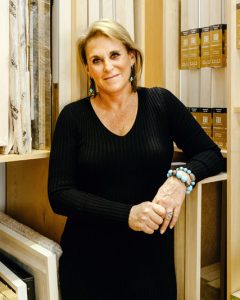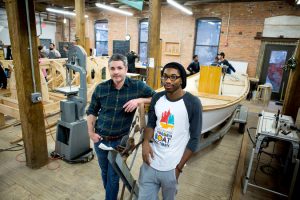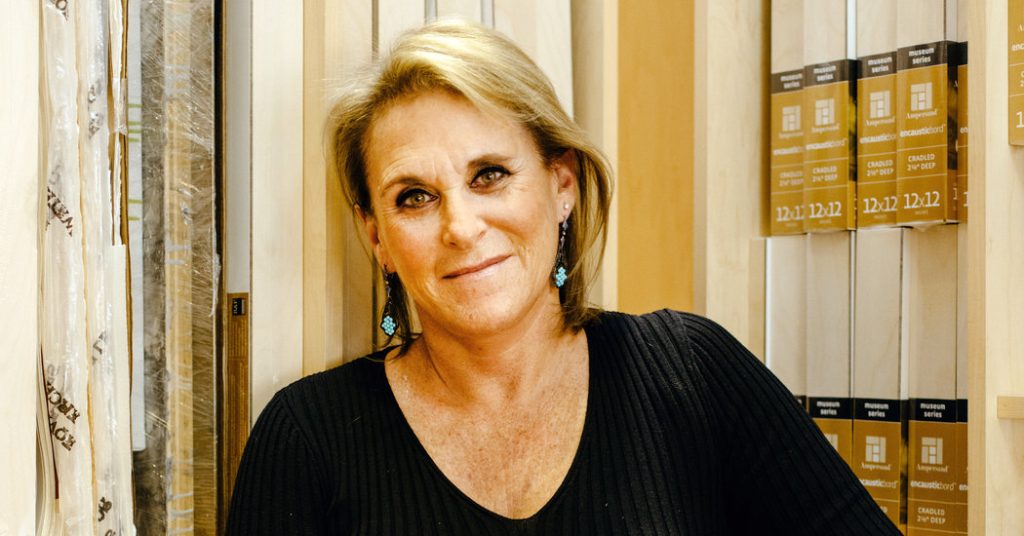
PHILANTHROPISTS have poured millions of dollars into improving education in the United States — paying for new buildings, buying new computers and even creating new charter schools.
Susan Crown, a member of the billionaire Crown family of Chicago, is trying something different. Two years ago, she began working with organizations that seek to foster character traits like grit, empathy and perseverance, which studies show can be determinants of future success.
But financing organizations that focus on social and emotional learning programs for disadvantaged children was just part of the effort. Ms. Crown said she also wanted to go deeper into understanding why some organizations succeeded so well.
“This is my second chapter of foundation life,” Ms. Crown said. “It’s the exact opposite of my first chapter, which was widespread, very regional, not terribly strategic. There were a million moving pieces. This is a very focused, intentional, high-risk program.”
After examining hundreds of applications, she picked eight organizations to support and study as part of what she called the Susan Crown Exchange.
The organizations each received $100,000. In return, she asked them to gather three times over the two-year period of the grant to dissect what they were doing and why it had proved successful. Her goal was to find the secret sauce and reveal it to other organizations trying to do similar work.
The organizations selected for the program do not offer typical after-school programs. One brings teenagers together to create, write, produce and act in musicals with themes like sexual abuse, bullying and urban violence. Another teaches inner-city students how to build wooden boats.

Yet these programs seemed to be improving the lives of the small number of participants they served. How were they doing it, and could it be replicated?
Yamir Jackson-Adens, 18, began going to the Philadelphia Wooden Boat Factory in eighth grade. Living in a poor section in the northeast part of the city, he said he had been bullied in elementary school, and he was still shy. The boat program intrigued him, even though he knew no one who owned a boat.
“In boat building, you learn stuff,” Mr. Jackson-Adens said. “You’re free to move. You don’t have a whole lot of restrictions. It’s more of a trial-and-error kind of thing. You learn from those mistakes. In school, if you fail, you’ve failed.”
Brett Hart, executive director of the Philadelphia Wooden Boat Factory, grew up in the same neighborhood and has seen the decline in the education and opportunity there firsthand.
“We are at the front lines of educational inequity,” Mr. Hart said. “Our national response has been to double down on items like Common Core.” But, he said, skills like “the ability to be adaptive, collaborative, resourceful are the tools we need to thrive.”
He said the funding from the Susan Crown Exchange allowed the organization to bring on a social worker to deepen the work it was doing in helping high school students regulate their emotions and focus on the positive and constructive aspects of their lives. But the meetings with the other organizations and the experts Ms. Crown brought in gave Mr. Hart the perspective to incorporate more academic research into what his organization had been doing intuitively, he said.
Similarly, Jennifer Freed, executive director of AHA in Santa Barbara, Calif., was proud of the success the organization had in helping local teenagers, with programs reaching nearly 3,000 people a year. The group’s name stands for Attitude, Harmony, Achievement.
But the analysis of what AHA was doing helped Ms. Freed envision it as something bigger. “The thing I learned the most about is how to track the development of social and emotional skills through a yearlong process,” she said. “I really learned how to work with other agencies nationwide and imagine AHA as a nationwide program.”
One criticism of these programs is that they need many well-trained counselors and mentors to work in small groups with students, and that makes them expensive to run and replicate. At AHA, there is a six-to-one student-to-mentor ratio. The Philadelphia Wooden Boat Factory program is limited to 36 students a year.
Bringing the ideas behind these programs to more people was one reason Ms. Crown wanted to create what is essentially a how-to guide for other groups.
Titled “Preparing Youth to Thrive: Promising Practices in Social and Emotional Learning,” the guide was produced with the David P. Weikart Center for Youth Program Quality, which has a system to measure the effectiveness of youth programs.
“We came up with a set of S.E.L. skills that we found could be built up,” Ms. Crown said, referring to social and emotional learning.

The major skills that needed to be developed, she said, were emotion management, empathy, teamwork, responsibility, initiative and problem solving. If there was one superskill, she said, it was “agency,” another way of saying drive.
For many philanthropists, undertaking an initiative like this, in which success is hard to quantify in the short term and endless amounts of money could be spent over time, could be too daunting. After all, a building is built and computers are bought — or not. (Ms. Crown said she thought the program was costing her about $1 million a year.)
“Most philanthropy is big idea, but the big idea that no one else is doing is more difficult,” said Bill Woodson, head of the North America family office group at Citi Private Bank. “Some philanthropists are held back because they may lack the resources. Or it may be a time commitment. Some are just pragmatic, and they want to invest in immediate, tangible results.”
But, Mr. Woodson added, “I’d hate philanthropists to be limited in what they’re doing because of measurability requirements.”
Ms. Crown said assessing success and failure was always on her mind. “Success is getting this through a major youth system and to be able to do pre- and post-measurement,” she said. “Failure would be if this did not
resonate. But I don’t think that’s the case.”
Yet success can also radiate down to the individual groups. Paul Griffin, founder and president of the Possibility Project, which teaches high school students in New York how to create and perform in a musical based on difficulties in their lives, said he hoped that participating in the Susan Crown Exchange would help other philanthropists see how to support organizations like his.
“In our field, social and emotional learning has been very vague,” he said. “As a consequence, of course, for funders and other folks, there wasn’t really anything to talk about. People knew S.E.L. was important, but what they didn’t know was how do you do it.”
Ms. Crown said she was pleased with how the first group fared and the field guide turned out but added that the Susan Crown Exchange still had a long way to go: “We have the luxury of time to study something and the attitude of a growth mind-set and the capital to actually do something.”
“We knew that we’re not going to get a perfect calculus equation,” she said. “There are certain things we can measure and certain things we can’t.”
And this is where these programs can succeed on a smaller scale. Next fall, Mr. Jackson-Adens will be attending Colorado State University to begin studies that he hopes will lead to becoming a veterinarian.
“Boat got me into thinking outside the box,” he said. “It helped me adjust to different situations.”
That is a life skill anyone could use.

